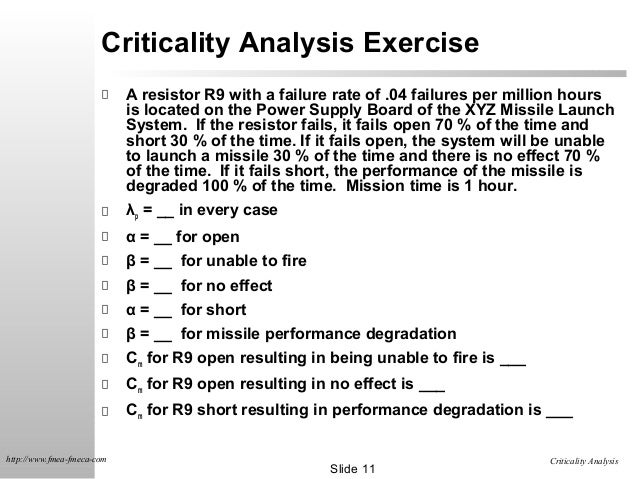How To Perform A Criticality Analysis

Click on the arrows beside the topics below to learn more about the content and definition of a critical analysis, and the ways to evaluate a theory, concept, argument, methodology, and research results and conclusions.For further queries or assistance in writing a critical analysis. What do you critically analyse?In a critical analysis you do not express your own opinion or views on the topic. You need to develop your thesis, position or stance on the topic from the views and research of others. In academic writing you critically analyse other researchers’:. concepts, terms. viewpoints, arguments, positions.
Mar 21, 2013 How to Write a Critical Analysis - Writing an Effective Analysis Choose several noteworthy areas to analyze. Purchase your tracks today tag\. Balance the positive and negative. Identify any controversies surrounding the topic. Explain why the topic is relevant. Avoid turning the focus inward. Do not focus on summary. To easily know how to write a critical analysis of a poem, use a critical analysis sample as your writing guide. A good sample will enable you to know where and how to present different elements of your analysis. You can find an example of a critical analysis of a poem here.
Asset Criticality Analysis
methodologies, approaches. research results and conclusionsThis means weighing up the strength of the arguments or research support on the topic, and deciding who or what has the more or stronger weight of evidence or support.Therefore, your thesis argues, with evidence, why a particular theory, concept, viewpoint, methodology, or research result(s) is/are stronger, more sound, or more advantageous than others. What does ‘analysis’ mean?A critical analysis means analysingor breaking down the parts of the literature and grouping these into themes, patterns or trends.In an analysis you need to:1. Identify and separate out the parts of the topic by grouping the various key theories, main concepts, the main arguments or ideas, and the key research results and conclusions on the topic into themes, patterns or trends of agreement, dispute and omission.2. Discuss each of these parts by explaining:i. The areas of agreement/consensus, or similarityii. The issues or controversies: in dispute or debate, areas of differenceii.
How To Perform A Criticality Analysis Examples
The omissions, gaps, or areas that are under-researched3. Discuss the relationship between these parts4. Examine how each contributes to the whole topic5. Make conclusions about their significance or importance in the topic What does ‘critical’ mean?A critical analysis does not mean writing angry, rude or disrespectful comments, or expressing your views in judgmental terms of black and white, good and bad, or right and wrong.To be critical, or to critique, means to evaluate.